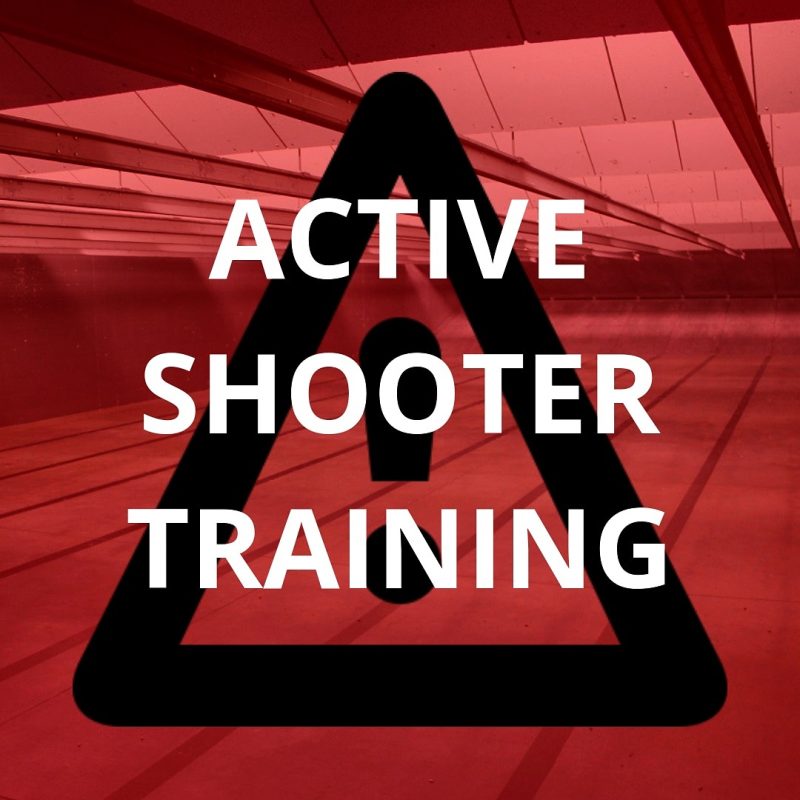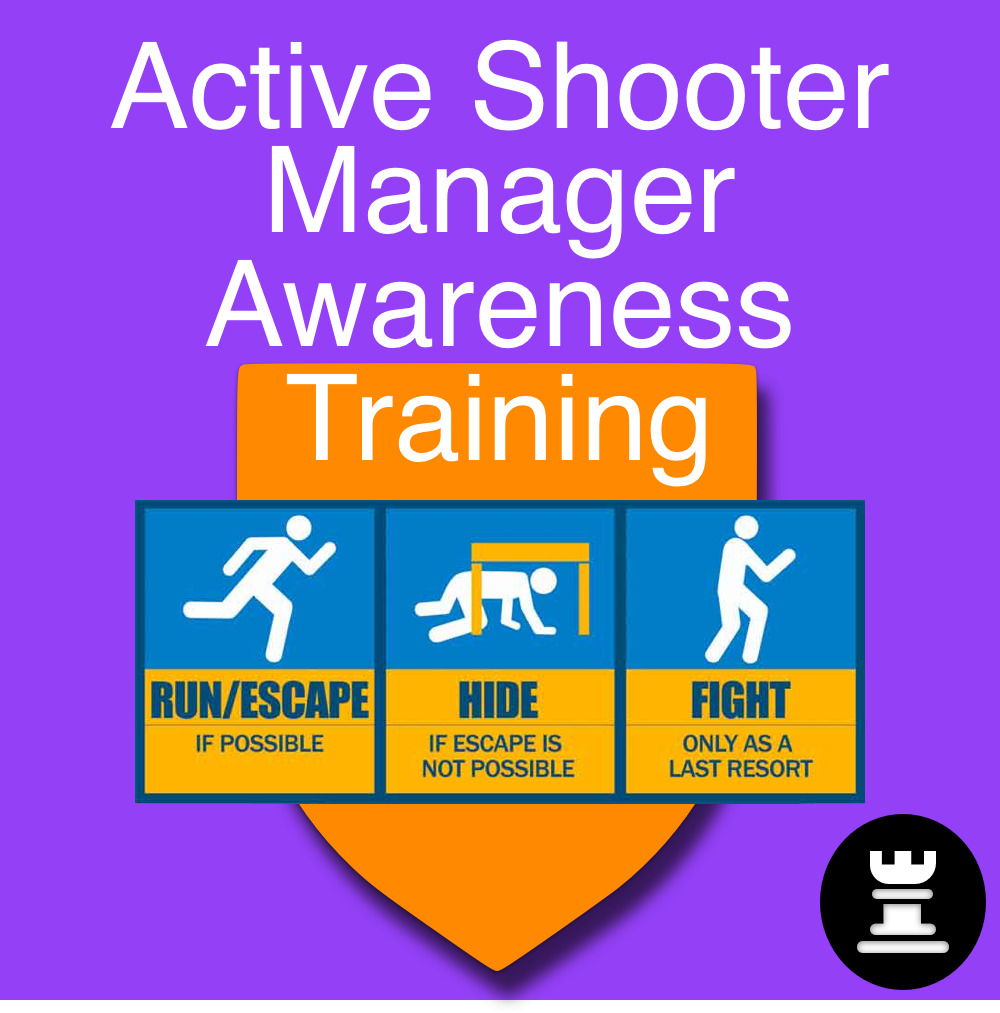Just how to Prepare Your Personnel with Active Shooter Training for Emergency Situations
Just how to Prepare Your Personnel with Active Shooter Training for Emergency Situations
Blog Article
Executing Active Shooter Training: Ideal Practices for Creating a Safe and Prepared Community Setting
As communities face the disturbing reality of energetic shooter events, the application of thorough training programs comes to be crucial. An effective method rests on not just the advancement of customized educational programs that address regional dangers but additionally the involvement of diverse stakeholders. By using a range of training techniques, communities can make sure that all members are outfitted with essential abilities. The challenge exists in keeping an adaptive framework that advances with emerging threats. What are the essential aspects that can transform a conventional training program right into a durable model for neighborhood strength?

Understanding the Requirement for Educating
In an era noted by boosting incidents of violence in public spaces, comprehending the requirement for active shooter training has never ever been more important. The occurrence of mass capturings across numerous environmentsâEUR" such as institutions, workplaces, and buying centersâEUR" underscores the urgency for individuals and companies to be prepared for such emergency situations. Energetic shooter situations can unfold swiftly, leaving little time for individuals to respond efficiently. Consequently, extensive training campaigns can equip individuals with the understanding and skills to respond emphatically.
Training fosters a sense of empowerment and readiness, enabling people to really feel even more protected in their surroundings. The advantages of active shooter training expand past immediate feedback; they consist of enhancing communication methods and boosting overall safety and security measures within organizations.
Secret Parts of Effective Programs
Effective active shooter training programs include numerous vital components that enhance preparedness and action abilities. Initially, thorough curriculum development is crucial, ensuring that training material is pertinent, evidence-based, and tailored to the specific requirements of the organization or area. This consists of comprehending the dynamics of active shooter events and the emotional influence on people included.
2nd, practical training scenarios should be used to simulate prospective scenarios, enabling participants to practice decision-making and reaction techniques in a regulated environment. These drills assist in muscle memory and build confidence amongst individuals.
Third, a concentrate on communication protocols is critical. Establishing clear lines of interaction amongst regulation enforcement, emergency situation -responders, and participants ensures worked with actions throughout an incident. Regular updates and correspondence course aid keep communication pathways clear and efficient.
4th, recurring examination and comments systems should be integrated into the training program - active shooter training. Assessing the efficiency of training via individual comments and performance metrics permits for continual renovation
Last but not least, promoting a society of safety and readiness within the community urges vigilance and proactive actions, making certain that individuals are not just trained but also involved in preserving a safe environment.
Engaging Area Stakeholders

To effectively involve these stakeholders, it is necessary to communicate the goals and advantages of the training. Organizing informative sessions can help make clear the training's function, address worries, and detail the duties each stakeholder may play. Creating a stakeholder consultatory board can assist in continuous dialogue, enabling for diverse viewpoints and understandings to be integrated right into the training program.
Building connections with neighborhood leaders and organizations is likewise essential. Their support can enhance outreach efforts, boost engagement, and make sure that training is customized to the distinct demands of the neighborhood. In addition, stakeholders can aid in sharing information and sources, strengthening the message of safety and security and preparedness.
Eventually, involving community stakeholders not only enhances the training initiative yet additionally grows a feeling of ownership among homeowners, bring about a more resilient and enlightened neighborhood with the ability of reacting properly to prospective threats.
Educating Delivery Techniques
Making use of a selection of training distribution techniques is vital to accommodate the diverse knowing designs and requirements of individuals in active shooter training programs (active shooter training). Efficient training can take several types, including talks, hands-on simulations, on the internet components, and interactive workshops. Each method offers a special function and can improve the general understanding experience

Online from this source components offer flexibility and availability, making it possible for individuals to discover at their own speed. These can consist of videos, quizzes, and discussions to gauge understanding. Interactive workshops motivate team conversations and problem-solving, advertising teamwork and communication abilities.
Including a combined method that combines these navigate to this site techniques not just enhances the training experience however also guarantees that participants are better prepared to react successfully in case of an energetic shooter circumstance (active shooter training). By dealing with different learning choices, companies can create a more educated and receptive community
Continuous Assessment and Enhancement
Regular evaluation and improvement of active shooter training programs are crucial to maintaining their relevance and efficiency. As risks develop, so need to the strategies and techniques used in training. Constant analysis makes certain that training web content mirrors the most recent knowledge on active shooter events, including lessons learned from recent events and changing for emerging trends.
To facilitate this procedure, organizations must develop comments mechanisms that include individual evaluations, expert evaluations, and case debriefs. Gathering information on participant efficiency during drills and exercises is vital, as it highlights locations requiring renovation and notifies future training sessions. Furthermore, involving with legislation enforcement and emergency situation responders can give useful insights into the usefulness and applicability of training methods.
Regularly scheduled testimonials of training materials and strategies need to be mandated, promoting an environment of advancement and flexibility. Organizations should additionally encourage a culture of continuous learning, where employee really feel empowered to recommend changes based upon their experiences. By devoting to continual assessment and enhancement, organizations not just improve the effectiveness of their energetic shooter training programs but likewise strengthen their total commitment to safety and readiness within the community.
Final Thought
To conclude, reliable implementation of active shooter training requires a comprehensive technique that focuses on neighborhood involvement and realistic simulations. By developing tailored educational programs, integrating diverse training techniques, and fostering collaboration among stakeholders, areas can enhance readiness. Constant evaluation and comments devices are crucial for adapting programs to arising threats, therefore reinforcing total safety and security. Ultimately, a dedication to recurring training and improvement cultivates a culture of caution and preparedness, guaranteeing a more secure environment for all community participants.
Report this page